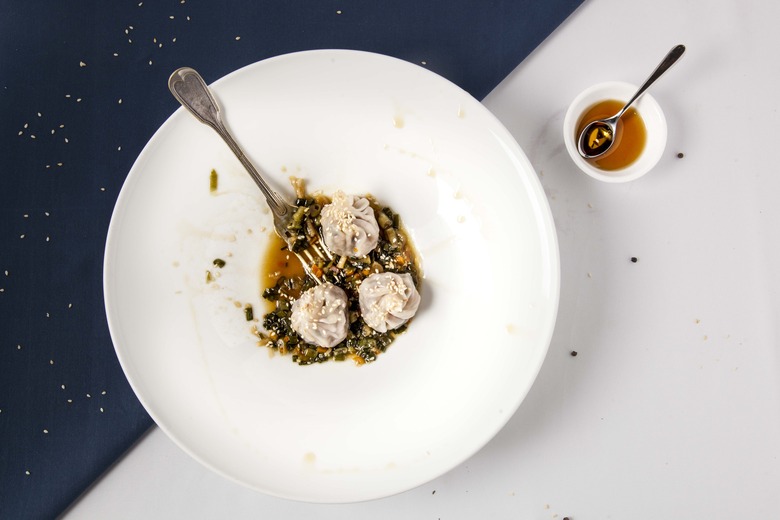Now's The Time To Try Peruvian Cuisine In New York City
Peruvian cuisine, the flexible upscale/healthy-fast-casual choice, is becoming a trend in a few major cities outside of New York, but we like to think ours is the best, especially since it includes a fusion of other cuisines like Japanese, Chinese, and other Spanish influences that are well-executed and exciting rather than contrived and confusing. Owner of the sweeping upscale dining room of Raymi and the over-the-counter Latin Beet Kitchen (where, by the way, you can also eat in a second nice dining room), Roger Torres has created something rare in New York City, something that is truly one of a kind. We spoke to him about how he was able to successfully blend the two concepts, where to start if you're new to Peruvian food culture, and his fusion-flavored take on lighter versions of traditional dishes for spring and summer.
The Daily Meal: What makes Peruvian food different than other South American cuisines?
Roger Torres: Most prominently, the diversity of ingredients that have all come together in Peru. We take influences from Japanese, Chinese, and Spanish cuisines and combine them with the native Peruvian ingredients and methods we are so familiar with. Traditionally, though, the four staples of our cuisine are corn, potatoes, beans, and grains like quinoa.
Where does Peruvian food currently fit in the NYC dining scene?
Peruvian food is inherently multicultural, which is why it works so well in a cosmopolitan society. The diversity of cultures in New York means that people are adventurous and always open to trying new and unexpected flavors and cuisines.
What would you consider entry-level Peruvian food?
Some may say that Peruvian food is Latin food with Asian influences, but it is very diverse. I would say that a classic Ceviche introduces you to the Peruvian use of flavor and fresh ingredients. Just like any other cuisine and home cooking in general, sometimes simple is truly better. Taking ingredients in their raw form and not manipulating them too much is the way to go. With Peruvian food, the variety of chilies and fresh seafood are definitely flavors that you can easily replicate at home. Ceviche is always a favorite if you can find fresh fish and seafood and [is] usually simple and quick and will be sure to please all your family and friends.
We wrote about one of the world's best chefs being from Peru and his Nikkei cuisine. How do Japanese and other flavors that you use in your fusion cooking influence your cuisine at both Latin Beet and Raymi?
We try to play around with Japanese ingredients and flavors here at both Raymi and Latin Beet Kitchen. At Raymi we have a tuna ceviche in which we like to use white shoyu and make our own furikake with a Peruvian twist. We also like to get creative with the Japanese aspect of Nikkei cuisine as the subtle flavors balance out those bold Peruvian notes. At Latin Beet we also make our Tuna Nikkei ceviche as one of our bowl's proteins in which we use yuzu instead of limes and serve it with our house-made Nikkei furikake.
How do you blend the two concepts of fast-casual and upscale dining without one diluting the other?
Even though Latin Beet Kitchen and Raymi were both created around the philosophy of serving healthy and Latin-inspired meals with a family touch, we let each concept shine on its own by creating different menus, service methods, and price points. Latin Beet Kitchen is more about healthy dine-and-dash items and Raymi has a more luxurious dining atmosphere. The most important approach when blending the two concepts is to ensure we are always maintaining very high standards.
What do you make of the other restaurants starting to pick up on this trend, like Rosaline/Mamacita in LA?
I think this is just the perfect example of the potential that Peruvian cuisine has. More and more chefs are pushing Peruvian cuisine forward, discovering its versatility and ability to adapt to new concepts. I would not call it a trend; I am sure Peruvian food is here to stay.
For more New York City Restaurant stories, click here.
